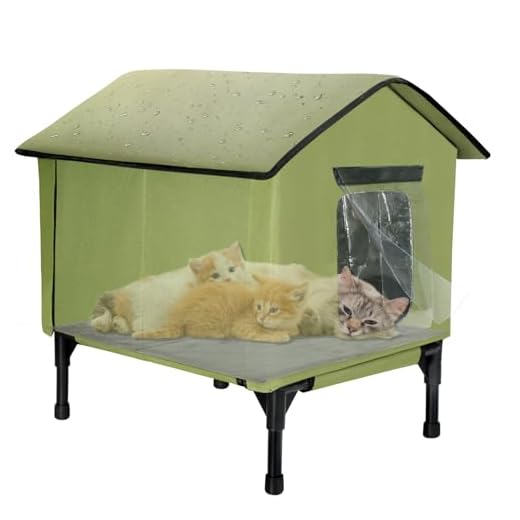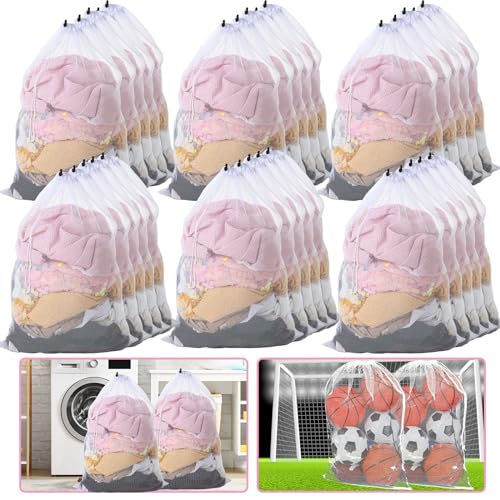



During the chilling months, many furry wanderers seek out warmth and shelter in various locations. One effective choice is to find nooks around buildings, such as under porches, in garage spaces, or even behind large outdoor equipment. These areas provide protection from harsh winds and precipitation, creating a cozy spot to curl up.
Another clever option is the use of natural structures like dense bushes or thick trees. These green spaces not only offer insulation but also concealment from potential dangers. Adding some soft bedding, like straw or old blankets, can enhance comfort and warmth in these hideaways.
Some adventurous souls may even choose to cozy up in abandoned vehicles. Car engines retain heat long after the engine is turned off, making them an appealing spot. However, it’s essential to ensure these vehicles are safe and accessible without causing harm.
Lastly, community members can play a part by providing insulated outdoor shelters specifically designed for our feline friends. Simple wooden boxes with proper insulation can serve as a perfect haven, ensuring they stay warm and protected throughout the frosty season.
Common Shelters for Felines During Cold Months
Providing adequate protection from harsh conditions is paramount for outdoor residents. Here are some effective options for creating cozy hideouts that can keep them safe and warm.
Insulated Cat Houses
Investing in insulated shelters designed specifically for outdoor use is highly beneficial. These structures typically feature thermal insulation and are raised off the ground to prevent cold air from seeping in. Look for models with a flap door to minimize wind exposure. You can also DIY by using materials like Styrofoam or wooden pallets for added warmth.
Natural Enclosures
Utilizing natural elements is a great way to create a safe refuge. Dense bushes, under decks, or sheds provide excellent cover. Adding straw or blankets can enhance comfort. Ensure these spots remain dry and protected from direct wind. A simple cardboard box lined with blankets can also offer a temporary haven.
For those looking to enhance their outdoor setup, consider checking out the best cooling pad for outdoor cats. This can help maintain a comfortable temperature during fluctuating weather patterns.
How to Create a Safe Winter Shelter for Outdoor Felines
To ensure warmth and comfort for outdoor companions during chilly months, construct a shelter that is insulated and weatherproof. Use materials like foam board or straw for insulation, as these help retain heat effectively.
Choose a location that is sheltered from wind and moisture. Elevating the structure off the ground using pallets or similar items will prevent cold and damp from seeping in. A simple design could be a wooden box or a plastic storage bin with an entrance hole, allowing easy access while keeping out harsh elements.
Insulation and Warmth
Line the inside with straw, which is an excellent insulator. Avoid using blankets, as they can retain moisture and become cold. For added comfort, consider placing a do cats like electric blankets option inside the shelter, ensuring it has a safe energy source. Always check for safety before using any electrical devices.
Access and Safety Features
Ensure the entrance is low enough for smaller creatures but not so large that it exposes the interior to cold winds. A flap or curtain can help maintain warmth. Additionally, place a few escape routes in case of danger, allowing freedom of movement. Regularly check the shelter for cleanliness and to ensure it remains safe from predators.
Video:
During the chilling months, many furry wanderers seek out warmth and shelter in various locations. One effective choice is to find nooks around buildings, such as under porches, in garage spaces, or even behind large outdoor equipment. These areas provide protection from harsh winds and precipitation, creating a cozy spot to curl up.
Another clever option is the use of natural structures like dense bushes or thick trees. These green spaces not only offer insulation but also concealment from potential dangers. Adding some soft bedding, like straw or old blankets, can enhance comfort and warmth in these hideaways.
Some adventurous souls may even choose to cozy up in abandoned vehicles. Car engines retain heat long after the engine is turned off, making them an appealing spot. However, it’s essential to ensure these vehicles are safe and accessible without causing harm.
Lastly, community members can play a part by providing insulated outdoor shelters specifically designed for our feline friends. Simple wooden boxes with proper insulation can serve as a perfect haven, ensuring they stay warm and protected throughout the frosty season.
Common Shelters for Felines During Cold Months
Providing adequate protection from harsh conditions is paramount for outdoor residents. Here are some effective options for creating cozy hideouts that can keep them safe and warm.
Insulated Cat Houses
Investing in insulated shelters designed specifically for outdoor use is highly beneficial. These structures typically feature thermal insulation and are raised off the ground to prevent cold air from seeping in. Look for models with a flap door to minimize wind exposure. You can also DIY by using materials like Styrofoam or wooden pallets for added warmth.
Natural Enclosures
Utilizing natural elements is a great way to create a safe refuge. Dense bushes, under decks, or sheds provide excellent cover. Adding straw or blankets can enhance comfort. Ensure these spots remain dry and protected from direct wind. A simple cardboard box lined with blankets can also offer a temporary haven.
For those looking to enhance their outdoor setup, consider checking out the best cooling pad for outdoor cats. This can help maintain a comfortable temperature during fluctuating weather patterns.
How to Create a Safe Winter Shelter for Outdoor Felines
To ensure warmth and comfort for outdoor companions during chilly months, construct a shelter that is insulated and weatherproof. Use materials like foam board or straw for insulation, as these help retain heat effectively.
Choose a location that is sheltered from wind and moisture. Elevating the structure off the ground using pallets or similar items will prevent cold and damp from seeping in. A simple design could be a wooden box or a plastic storage bin with an entrance hole, allowing easy access while keeping out harsh elements.
Insulation and Warmth
Line the inside with straw, which is an excellent insulator. Avoid using blankets, as they can retain moisture and become cold. For added comfort, consider placing a do cats like electric blankets option inside the shelter, ensuring it has a safe energy source. Always check for safety before using any electrical devices.
Access and Safety Features
Ensure the entrance is low enough for smaller creatures but not so large that it exposes the interior to cold winds. A flap or curtain can help maintain warmth. Additionally, place a few escape routes in case of danger, allowing freedom of movement. Regularly check the shelter for cleanliness and to ensure it remains safe from predators.
Video:
During the chilling months, many furry wanderers seek out warmth and shelter in various locations. One effective choice is to find nooks around buildings, such as under porches, in garage spaces, or even behind large outdoor equipment. These areas provide protection from harsh winds and precipitation, creating a cozy spot to curl up.
Another clever option is the use of natural structures like dense bushes or thick trees. These green spaces not only offer insulation but also concealment from potential dangers. Adding some soft bedding, like straw or old blankets, can enhance comfort and warmth in these hideaways.
Some adventurous souls may even choose to cozy up in abandoned vehicles. Car engines retain heat long after the engine is turned off, making them an appealing spot. However, it’s essential to ensure these vehicles are safe and accessible without causing harm.
Lastly, community members can play a part by providing insulated outdoor shelters specifically designed for our feline friends. Simple wooden boxes with proper insulation can serve as a perfect haven, ensuring they stay warm and protected throughout the frosty season.
Common Shelters for Felines During Cold Months
Providing adequate protection from harsh conditions is paramount for outdoor residents. Here are some effective options for creating cozy hideouts that can keep them safe and warm.
Insulated Cat Houses
Investing in insulated shelters designed specifically for outdoor use is highly beneficial. These structures typically feature thermal insulation and are raised off the ground to prevent cold air from seeping in. Look for models with a flap door to minimize wind exposure. You can also DIY by using materials like Styrofoam or wooden pallets for added warmth.
Natural Enclosures
Utilizing natural elements is a great way to create a safe refuge. Dense bushes, under decks, or sheds provide excellent cover. Adding straw or blankets can enhance comfort. Ensure these spots remain dry and protected from direct wind. A simple cardboard box lined with blankets can also offer a temporary haven.
For those looking to enhance their outdoor setup, consider checking out the best cooling pad for outdoor cats. This can help maintain a comfortable temperature during fluctuating weather patterns.
How to Create a Safe Winter Shelter for Outdoor Felines
To ensure warmth and comfort for outdoor companions during chilly months, construct a shelter that is insulated and weatherproof. Use materials like foam board or straw for insulation, as these help retain heat effectively.
Choose a location that is sheltered from wind and moisture. Elevating the structure off the ground using pallets or similar items will prevent cold and damp from seeping in. A simple design could be a wooden box or a plastic storage bin with an entrance hole, allowing easy access while keeping out harsh elements.
Insulation and Warmth
Line the inside with straw, which is an excellent insulator. Avoid using blankets, as they can retain moisture and become cold. For added comfort, consider placing a do cats like electric blankets option inside the shelter, ensuring it has a safe energy source. Always check for safety before using any electrical devices.
Access and Safety Features
Ensure the entrance is low enough for smaller creatures but not so large that it exposes the interior to cold winds. A flap or curtain can help maintain warmth. Additionally, place a few escape routes in case of danger, allowing freedom of movement. Regularly check the shelter for cleanliness and to ensure it remains safe from predators.








